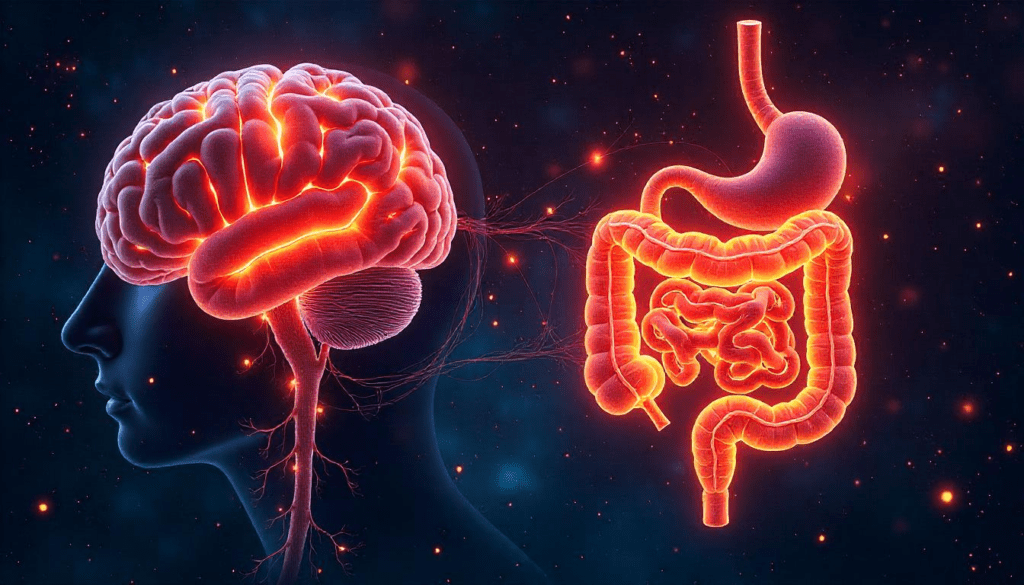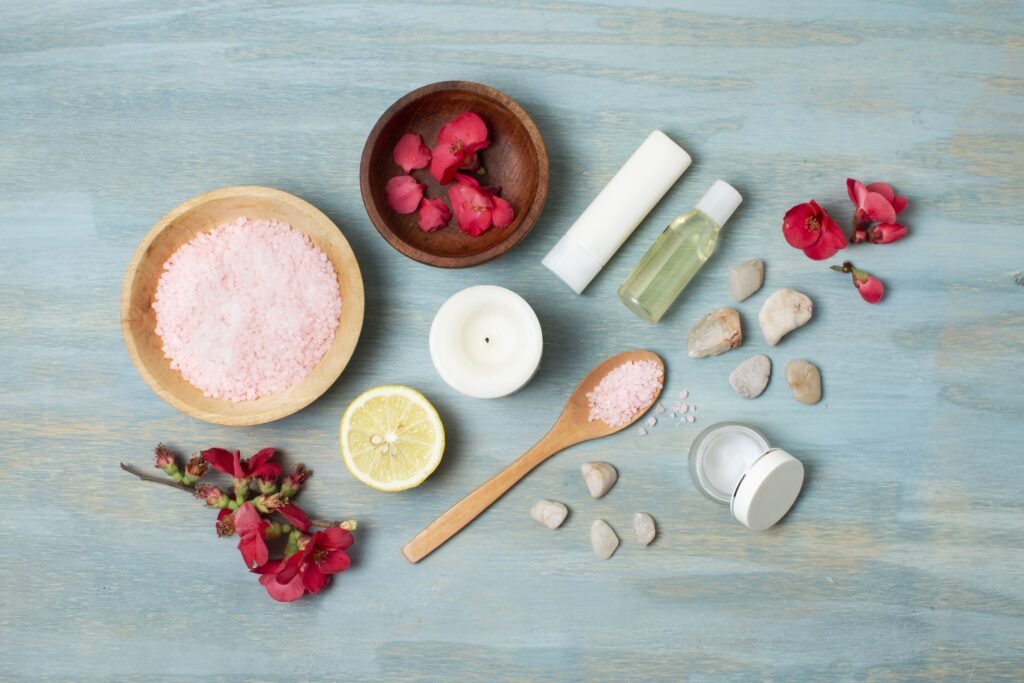I still remember the day I first read about using a detox bath to support gut health. It sounded almost too good to be true—a comforting soak in warm water that could help soothe my digestive woes, reduce bloating, and leave me feeling energized. Skeptical but curious, I decided to give it a try. Over time, I’ve witnessed subtle yet meaningful improvements in how I feel—less stomach discomfort, fewer sugar cravings, and a sense of overall harmony in my body. In this post, I’ll walk you through everything I’ve learned: why gut health matters, how a detox bath can be a game-changer, and exactly how to create your own gut-healing soak at home.
If you’ve been wrestling with digestive issues—whether it’s occasional constipation, bloating, or simply wanting to boost your overall gut function—this guide is for you.
Table of Contents
1. Why Gut Health Matters: Understanding the Foundation of Wellness

Our gut, often referred to as the “second brain,” plays a pivotal role in overall health. Beyond just breaking down food, the gut is the seat of a complex ecosystem of bacteria, yeast, and other microorganisms collectively called the gut microbiome. When balanced, this microbiome supports immune function, hormone regulation, mental clarity, and energy levels. When out of balance, however, you might experience a range of issues:
- Chronic bloating and gas
- Constipation or diarrhea
- Sugar cravings and mood swings
- Low energy and poor sleep quality
- Skin breakouts or acne
The Gut-Immune Connection
Approximately 70–80% of our immune cells reside in the gut‐associated lymphoid tissue (GALT). A healthy gut barrier prevents pathogens and toxins from entering the bloodstream, whereas a leaky gut—technically referred to as increased intestinal permeability—can trigger chronic inflammation. Over time, systemic inflammation can manifest as autoimmune conditions, allergies, and chronic fatigue.
Mental Health and the Gut-Brain Axis

It’s increasingly clear that gut health influences mental well-being. Through the gut-brain axis—an intricate network of neural, hormonal, and immune pathways—your gut communicates constantly with your central nervous system. Beneficial bacteria produce neurotransmitters like serotonin (about 90% of which is made in the gut) that influence mood, sleep, and cognitive function. When gut flora is imbalanced, you might notice anxiety, brain fog, or mood swings.
Why We Struggle with Optimal Gut Health
Modern lifestyles present a barrage of stressors that can disrupt gut balance:
- Poor dietary choices: Highly processed foods, excessive sugars, and lack of fiber can feed harmful bacteria.
- Chronic stress: Elevated cortisol levels disturb gut lining integrity and microbial diversity.
- Lack of movement: Sedentary habits slow down bowel motility and digestive efficiency.
- Environmental toxins: Heavy metals, pesticides, and pollutants can interfere with good bacteria.
It’s no wonder that gut health issues are increasingly common. But that’s where natural, supportive practices—like a detox bath for gut health—can make an impactful difference.
2. The Connection Between a Detox Bath and Digestive Health

At first glance, you might wonder: how can an aromatic, warm bath influence my digestion? The truth is that bathing has been used for centuries in various cultures to promote overall well-being.
How a Warm Soak Can Support Detoxification
A “detox bath” typically refers to soaking in warm water enriched with natural, gut-friendly ingredients—like Epsom salt (magnesium sulfate), sea salt, baking soda, or essential oils. Here’s how a detox bath works:
- Increased Circulation: Warm water dilates blood vessels near the skin’s surface, improving circulation. Better blood flow can support efficient nutrient delivery and toxin removal via the lymphatic system.
- Sweating Out Toxins: A hot bath can induce mild sweating, allowing the body to release toxins—heavy metals, environmental pollutants, and metabolic byproducts—through the skin.
- Magnesium Absorption: Epsom salt baths provide magnesium, which is often deficient in modern diets. Magnesium helps relax muscles (including the smooth muscles of the digestive tract), supports liver detoxification pathways, and reduces inflammation.
- Nervous System Reset: Immersing in warm water encourages the parasympathetic nervous system (the “rest-and-digest” mode). Activating this state can directly improve digestive motility and reduce stress hormones like cortisol.
Why Focusing on Gut Health Is More Than Diet Alone
We often think of healing our gut through kale smoothies or taking probiotic supplements, which are certainly important. Yet, our bodies are interconnected systems. Stress, poor sleep, and a sluggish lymphatic system can all undermine gut repair. A gut-boosting detox bath provides a holistic approach—addressing both physical toxin clearance and mental relaxation.
Real-Life Case Study: My Personal Turnaround
When I first tried a “gut health detox soak,” I was in the midst of chronic bloating and irritability. I combined warm water, Epsom salt, and a few drops of lavender essential oil, and sank into the tub for 20 minutes. Over the next few days, I noticed:
- Less abdominal cramping in the morning
- Improved quality of sleep due to lowered stress
- Reduced sugar cravings (likely thanks to better magnesium levels)
While it wasn’t a magic cure overnight, consistent baths—coupled with dietary tweaks—played a major role in shifting my digestion from constant discomfort to smoother function.
The Science Behind a Gut-Boosting Detox Bath
Before diving into recipes, it helps to understand what’s happening under the surface—literally and figuratively—when you take a detox bath for gut health. Here’s a closer look at some key mechanisms:
Transdermal Magnesium and Digestive Support
- What Is Transdermal Absorption? “Transdermal” means passing through the skin. Magnesium sulfate (Epsom salt) or magnesium chloride added to bath water dissolves into ions that can be absorbed through pores.
- Why Magnesium Matters for Digestion: Magnesium plays multiple roles:
- Muscle Relaxation: It relaxes the smooth muscle of the gastrointestinal tract, helping relieve constipation and cramping.
- Enzymatic Reactions: Over 300 enzymatic processes require magnesium—many involved in nutrient absorption and ATP production (your body’s energy currency).
- Anti-Inflammatory: Magnesium modulates inflammatory pathways; low levels are correlated with increased gut inflammation.
Numerous small-scale studies (e.g., “Magnesium Deficiency and Intestinal Barrier Function” published in Nutrients, 2020) have shown that improving magnesium status can help maintain tight junctions in intestinal lining, reducing the risk of “leaky gut.” While more large-scale human trials are needed, anecdotal experiences (including my own) strongly support the use of magnesium baths for gut comfort and healing.
Sweating, Lymphatic Drainage, and Toxin Elimination
- Lymphatic System Basics: The lymphatic system collects waste from interstitial spaces and transports it to lymph nodes for filtration. Unlike the circulatory system, the lymphatic system doesn’t have a “pump” (heart)—it relies on muscle movement and fluid shifts.
- Role of a Warm Bath: Immersion in warm water increases peripheral blood flow and can improve lymphatic drainage. As lymph moves more efficiently, the body can more rapidly remove toxins (e.g., heavy metals, mold byproducts, metabolic waste) that might otherwise burden liver detox pathways and impair gut function.
- Sweat as a Detox Pathway: A gentle sweat during a hot soak helps eliminate water-soluble toxins like certain pesticides and pharmaceutical residues. While sweating is not a primary detox pathway (our liver and kidneys do most of the work), it’s an adjunct route that reduces overall toxic load.
Nervous System Regulation via the Gut-Brain Axis
- Relaxation Response: A warm, calming soak activates the parasympathetic nervous system (PSNS). As the PSNS ramps up, heart rate slows, cortisol levels drop, and blood flow shifts to digestive organs, promoting peristalsis (the wave-like muscle contractions that move food through the digestive tract).
- Stress and Gut Dysbiosis: Chronic stress triggers the release of corticotropin-releasing factor (CRF), which can alter gut motility and microbial balance—favoring pro-inflammatory bacteria. By intentionally creating a relaxation ritual (e.g., a detox bath), you’re sending a signal to the brain that it’s safe to rest and digest.
Essential Ingredients for a “DIY Detox Bath for Gut Health”

Now that we’ve covered the “why,” let’s explore the “what.” Below are the core ingredients you’ll need for an effective gut-health-focused detox bath. Feel free to mix and match based on personal preference, availability, and tolerance.
Epsom Salt (Magnesium Sulfate)
- Quantity: 1–2 cups per bath (depending on tub size)
- Benefits for Gut Health:
- Provides magnesium to relax intestinal muscles, relieve constipation, and ease cramps.
- Reduces inflammation systemically, supporting healthier gut lining.
Pro Tip: If you have sensitive skin or prefer a gentler magnesium boost, start with 1 cup.
Dead Sea Salt or Himalayan Pink Salt
- Quantity: ½–1 cup per bath
- Benefits for Gut Health:
- Rich in trace minerals (potassium, calcium, magnesium) that balance electrolytes.
- Promotes detoxification by supporting sweat production and lymphatic flow.
- Helps soothe skin irritation that may be associated with inflammatory gut conditions (e.g., eczema linked to gut dysbiosis).
Quick Note: Dead Sea salt tends to be finer and dissolves faster. Himalayan pink salt has a milder scent and can be more budget-friendly.
Baking Soda (Sodium Bicarbonate)**
- Quantity: ½–1 cup per bath
- Benefits for Gut Health:
- Alkalizes water, helping to neutralize skin surface acidity.
- Promotes gentle detoxification by allowing toxins to be drawn out through pores.
- May help relieve minor skin irritations caused by inflammatory gut conditions (e.g., psoriasis flare-ups).
Safety Reminder: If you’re on a sodium-restricted diet (e.g., for blood pressure control), use sparingly (½ cup) to avoid potential sodium absorption.
Bentonite Clay (Optional but Powerful)**
- Quantity: 2–4 tablespoons (start with 2 TBSP; max 4 TBSP)
- Benefits for Gut Health:
- Bentonite clay has a negative electrical charge, which can bind to positively charged toxins (like heavy metals). Through osmosis, toxins may be pulled out of the skin.
- May help reduce systemic toxin burden, indirectly supporting gut healing.
- Often touted for its skin-soothing properties (e.g., calming rashes or minor irritations).
Tip: If you’ve never used bentonite clay before, you might notice a clay residue on your skin. Gently rinse after bathing.
Essential Oils (Choose 1–2)**
While optional, essential oils can enhance the relaxation aspect of your detox bath. Choose gut-friendly, calming options:
- Lavender Oil (Lavandula angustifolia): 5–7 drops. Known for its calming, anti-inflammatory properties. Can help reduce digestive spasms.
- Peppermint Oil (Mentha × piperita): 3–5 drops. Cooling effect; may help relieve bloating and nausea.
- Ginger Oil (Zingiber officinale): 3–5 drops. Warming oil known for supporting circulation and reducing gut inflammation.
- Chamomile Oil (Matricaria chamomilla): 4–6 drops. Calming and anti-inflammatory; gentle on the skin.
Safety Tip: Always dilute essential oils in a carrier (like the bath water) before applying. Test a drop on your inner forearm to check for sensitivity.
Step-by-Step Guide: How to Make a Detox Bath for Gut Health at Home
Below is a detailed, step-by-step recipe for an at-home “gut health detox soak.” Feel free to adapt quantities based on your tub size and personal preferences. Aim for one 20–30 minute soak, 2–3 times per week for optimal results.
Gather Your Ingredients and Supplies
- Epsom Salt (Magnesium Sulfate): 1–2 cups
- Dead Sea Salt or Himalayan Pink Salt: ½–1 cup
- Baking Soda: ½–1 cup
- Bentonite Clay (Optional): 2–4 tablespoons
- Essential Oils (Optional): 3–7 drops (lavender, peppermint, ginger, or chamomile)
- Large Mixing Bowl: For combining dry ingredients
- Wooden or Silicone Spoon: For stirring
- Thermometer (Optional): To measure water temperature (ideal: 37–40°C / 98–104°F)
- Candle, Soft Music, or Dim Lighting: To set a relaxing atmosphere
Cleanse and Prep Your Bathtub
- Rinse the Tub: Make sure your tub is free of soap scum or residual cleaning products. A quick rinse with warm water will suffice.
- Fill with Warm Water: Turn on the faucet and fill the tub with warm water. Aim for a temperature that’s comfortable but slightly hot—around 98–104°F (37–40°C). Use a bath thermometer if you have one.
Mix Dry Ingredients in a Bowl
- Combine Salts: In a large bowl, add 1–2 cups of Epsom salt and ½–1 cup of Dead Sea or Himalayan pink salt. Stir gently to blend.
- Add Baking Soda: Sprinkle ½–1 cup of baking soda into the mixture and stir until distributed evenly.
- Optional Bentonite Clay: If using, measure out 2–4 tablespoons of bentonite clay and blend it into the salt-baking soda mixture.
Personal Note: I prefer 1½ cups of Epsom salt, ¾ cup of Dead Sea salt, and ¾ cup of baking soda. For bentonite clay, I stick to 2 tablespoons—enough to feel its detoxifying benefits without leaving too much residue.
Add Essential Oils (If Desired)
- Choose Your Oils Wisely: For gut soothing, I love 5 drops of lavender and 3 drops of peppermint. Lavender calms my nervous system; peppermint helps with occasional bloating.
- Drop Directly into Dry Mix: If you’re adding essential oils, put them on the dry mixture first. This helps disperse the oil so it doesn’t all concentrate in one spot. Stir gently to combine.
Reminder: Never pour essential oils directly onto your skin without dilution.
Pour Dry Mix into Running Water
- Slowly Add Mixture: As the tub fills, pour the dry ingredient blend under running water. This allows the salts and baking soda to dissolve more quickly.
- Stir the Water: Use your hand or a spoon to gently swirl the water, ensuring all ingredients dissolve. Ideally, there shouldn’t be any visible clumps of salt or baking soda.
Pro Tip: If you see any floating clumps, use a spoon to break them apart and swirl until dissolved.
Check Water Temperature
- Ideal Range: Around 100°F (38°C) is a sweet spot—warm enough to induce gentle sweating and relaxation, but not so hot that it becomes uncomfortable.
- Adjust as Needed: If it feels too hot, let it cool for a minute. If it’s too lukewarm, briefly add a bit more hot water.
Soak and Relax (20–30 Minutes)
- Enter Gently: Slip into the bath carefully, lowering yourself until the water covers your torso. If you have any cuts or scrapes on your skin, avoid fully submerging those areas to prevent stinging.
- Set the Mood: Light a candle, play soft music, or dim the lights. Breathe deeply, focusing on relaxing your muscles from head to toe.
- Use a Timer: Aim for 20–30 minutes. Anything under 15 minutes reduces the detox benefits; over 30 minutes can lead to dizziness or dehydration. If you feel lightheaded, exit the bath immediately.
- Hydrate: Keep a glass of water or herbal tea (e.g., ginger or chamomile tea) nearby. Sip as needed to stay hydrated—especially if you start sweating profusely.
My Routine: I like to keep a lavender-scented eye pillow over my eyes for extra relaxation. I also place a small stool next to the tub with a cup of warm ginger tea.
Rinse and Dry Off
- Gentle Rinse (Optional): After your soak, you can rinse off with lukewarm water to remove any clay residue or salt buildup on the skin. If you’re short on time, pat yourself dry with a soft towel—residual minerals on the skin can continue to be absorbed for a short time.
- Pat (Don’t Rub) Your Skin Dry: Use a clean, fluffy towel and gently pat yourself dry. Rubbing can irritate the skin, especially if you’ve used bentonite clay.
- Moisturize: Apply a gentle oil (like jojoba or sweet almond) or a natural body lotion to lock in moisture. Your skin might feel slightly tighter due to mineral absorption; moisturizing prevents dryness.
Conclusion
A detox bath for gut health is a simple, science-backed way to support your digestion, reduce inflammation, and promote relaxation. By soaking 2–3 times per week in warm water with Epsom salt (magnesium), sea or Himalayan salt, and baking soda—plus optional bentonite clay or calming essential oils—you encourage:
- Magnesium Absorption: Relaxes intestinal muscles, eases bloating, and supports gut barrier integrity.
- Improved Circulation & Lymphatic Flow: Helps remove toxins and delivers nutrients more efficiently.
- Parasympathetic Activation (“Rest and Digest”): Lowers stress hormones, enhances peristalsis, and balances the gut-brain axis.
Within a few weeks of consistent use, many people notice reduced bloating, more regular bowel movements, better sleep, and fewer sugar cravings. To maximize benefits, pair your soak with a light, anti-inflammatory meal, practice deep breathing or gentle meditation while bathing, and stay hydrated before, during, and after.
Always adjust ingredients, water temperature, and soak duration to your comfort level, and consult a healthcare provider if you have health conditions like kidney issues, cardiovascular concerns, or are pregnant.
